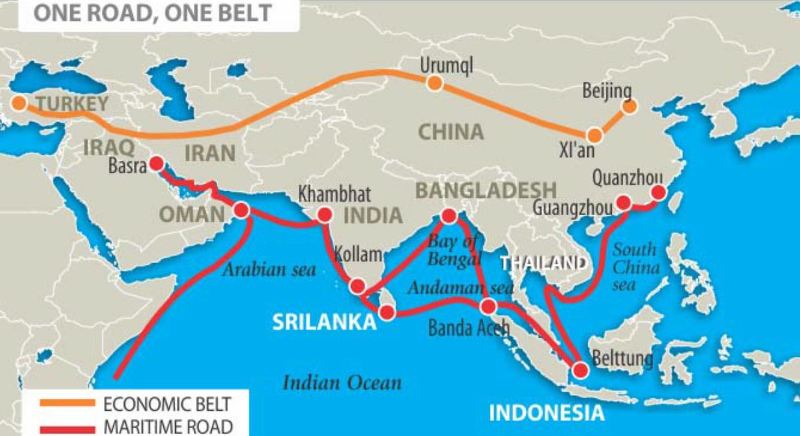
20 Oct Introducing China’s ‘Belt and Road’
One Belt, One Road (OBOR)
The initiative is an economic strategy of the People’s Republic of China which aims to link the two ends of Eurasia, as well as Africa and Oceania, along two routes – one overland and one maritime. The ‘One Belt, One Road’ name originates from the overland ‘Silk Road Economic Belt’ and the ‘21st-Century Maritime Silk Road’, concepts introduced by PRC President Xi Jinping in 2013. Ultimately the aim of the initiative is to also link Africa and Oceania.
On land, the plan is to build a new Eurasian land bridge and develop the economic corridors of: China-Mongolia-Russia; China-Central Asia-West Asia; the China-Indochina peninsula; China-Pakistan; and Bangladesh-China-India-Myanmar. On the seas, the initiative will focus on jointly building smooth, secure and efficient transport routes connecting major sea ports along the belt and road.
For Australia, the OBOR initiative presents an economic opportunity and, with Chinese endorsement, an Australia-China OBOR Initiative has been established to promote Chinese engagement in the Australian economy. Accru Asia partner Shanghai Acumen, has compiled this useful guide to the “Belt and Road” concept which is a good starting point for further research for overseas enterprises who are interested in exploring the implications for their business.
The State Council Information Office of the People’s Republic of China (PRC) has launched a special “BELT AND ROAD” (B&R) page on its website. In addition, the Belt and Road portal was also launched in March 2017 in both English and Chinese.
The website aims to promote information sharing and be a gateway to news in China and Belt Road countries, relevant policies, progress, data analysis and opinion. Users can also search for information they need in customised databases on economic data, policies, projects, enterprises and talents.
Ministry of Commerce of the PRC has also provided the platform to Enterprises who are interested on understand how to “Go Global” and the State Administration of Taxation of the People’s Republic of China provides the website regarding taxation within B&R.
Another website launched by the Xinjiang Uyghur Autonomous Regions Taxation Bureau focuses on policy strategy and tax arrangement.
Research center for The Belt & Road Financial and Economic Development is located in Xiamen National Accounting Institute and it’s mission is the study of financial policies, law and regulation and economic scales related to the Belt and Road countries.
Below is a summary of the major Belt and Road websites that support English and Chinese:
- The State Council Information Office of the People’s Republic of China (PRC)
- Belt and Road Portal
- Belt and Road Forum for International Cooperation
- The Belt and Road Initiative
- Belt and Road Initiative
Below is a summary of the major Belt and Road websites in Chinese only:
- Weibo of Belt and Road Portal
- State Administration of Taxation of the People’s Republic of China
- Ministry of Commerce of the PRC
- Research center for The Belt & Road Financial and Economic Development
- Xinjiang Uyghur Autonomous Regions Taxation Bureau
- One Belt and One Road Economic and Cultural Development Center
- Big Data for the Belt and Road Initiative
- Database for the Belt and Road
- State-owned Assets Supervision and Administration Commission of the State Council
- One Belt and One Road
- Research Center of the Belt and Road
- The Belt and Road
- Ministry of Education of the People’s Republic of China
By Lei Yu, Managing Partner, Shanghai Acumen. Translation by Keng Ou CPAs (Macau).


